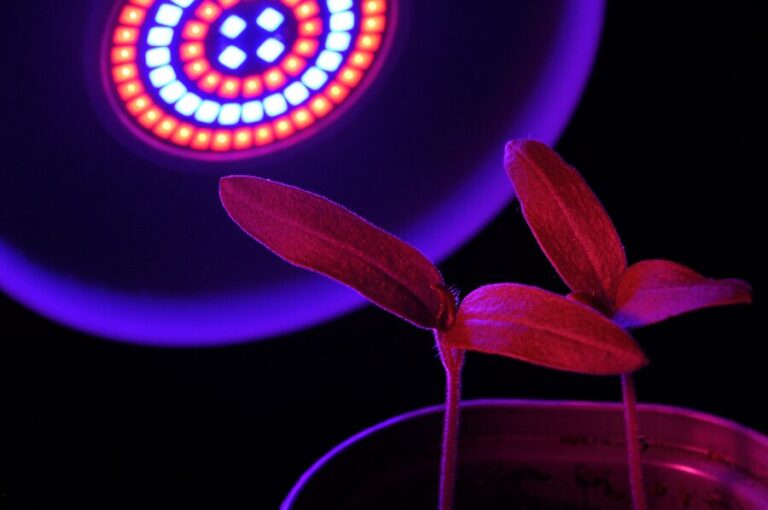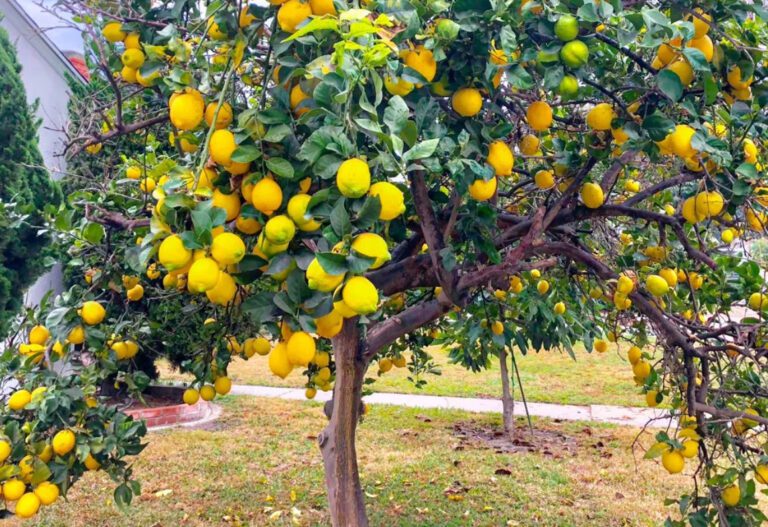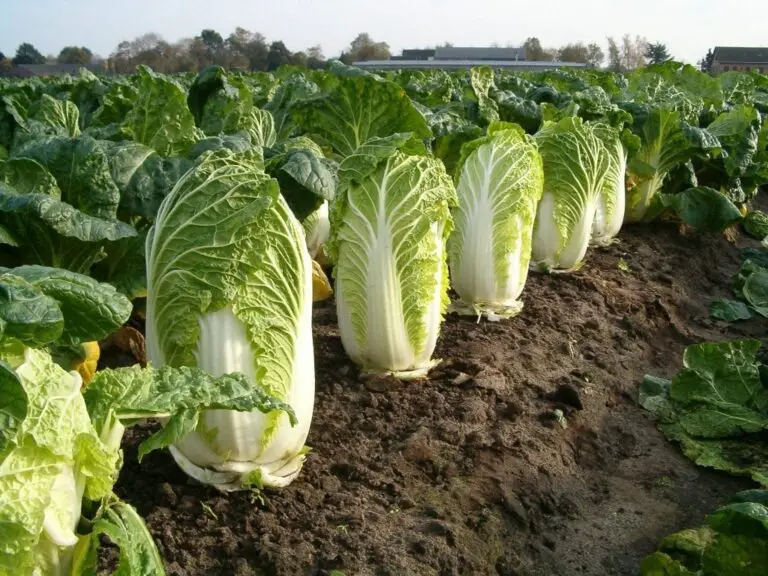Craft Your Own Potting Bench: 65 Free DIY Plans
Table of Contents
Benefits of a DIY Potting on Bench
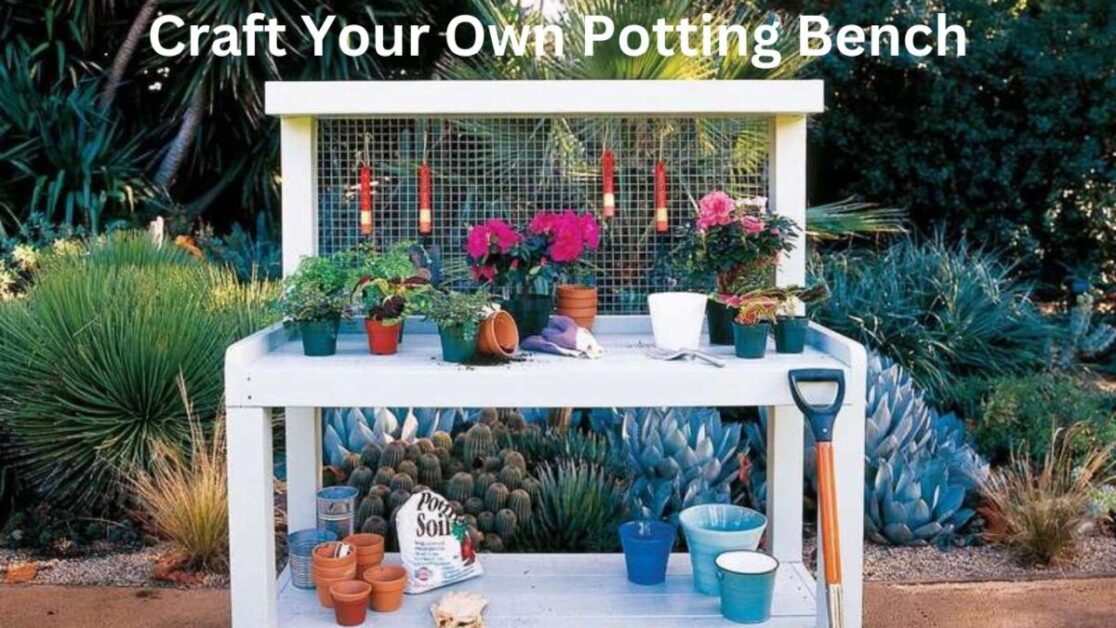
A DIY potting bench offers a wide range of benefits for gardening enthusiasts. Firstly, it provides a dedicated space for all your potting needs, ensuring efficiency and organization in your gardening tasks. With a potting on bench, you can keep all your tools, materials, and supplies in one central area, making it easier to access and reducing the time spent searching for items.
Secondly, a DIY potting bench allows for customization and personalization. You have the freedom to design and build the bench to suit your specific requirements and preferences. Whether you need additional storage shelves, hooks for hanging tools, or a built-in sink for easy cleanup, a potting bench can be tailored to meet your unique gardening needs.
Furthermore, a well-designed potting bench can enhance your gardening experience by providing a comfortable and ergonomic workspace. With a convenient height and ample space, you can pot and repot plants, start seeds, and undertake other tasks without straining your back or knees. It promotes proper posture and reduces the risk of injuries, ensuring a more enjoyable and productive gardening session.
In summary, a DIY potting bench is a valuable addition to any gardening space. It offers organization, customization, and ergonomic benefits that enhance efficiency and comfort in your gardening endeavors. So why not consider building your own potting on bench and elevate your gardening experience to new heights?
Essential Tools and Materials for Building a Potting on Bench
When it comes to building a potting bench, having the right tools and materials is crucial for creating a sturdy and functional workspace. Here are some essential tools and materials you will need to get started:
1. Lumber: Choose durable and weather-resistant wood such as cedar or redwood for the frame and tabletop of your potting bench. Opting for pressure-treated lumber can also help extend the lifespan of your bench.
2. Screws and Nails: Invest in a variety of screws and nails to secure the different components of your potting bench. Galvanized screws and nails are recommended for outdoor use, as they are more resistant to corrosion.
3. Drill and Drill Bits: A drill is essential for attaching the various wooden parts together. Make sure to have a set of drill bits in different sizes to accommodate the screws or bolts you’ll be using.
4. Saw: Whether it’s a circular saw, table saw, or a hand saw, having a reliable saw is crucial for cutting the lumber to the desired lengths and shapes. Don’t forget to wear safety goggles and follow proper safety precautions when using a saw.
5. Measuring Tape and Level: Accurate measurements and a level surface are key to ensuring your potting bench is built correctly. Invest in a good quality measuring tape and level to achieve precise results.
6. Work Gloves and Safety Glasses: Protecting your hands and eyes is essential while working with tools and materials. Invest in a pair of sturdy work gloves and safety glasses to keep yourself safe during the construction process.
Remember, having the right tools and materials can make all the difference in building a potting bench that will withstand the test of time. By using high-quality materials and ensuring proper assembly with the right tools, you can create a sturdy and functional workspace for all your gardening needs.
Choosing the Right Design and Style for Your Potting on A Bench
When it comes to choosing the right design and style for your potting bench, it’s important to consider both functionality and aesthetics. Your potting bench should be a practical workspace that meets your gardening needs while also enhancing the overall look of your outdoor area.
First and foremost, think about the size and layout of your garden. If you have limited space, a compact potting bench with built-in storage options can be a great choice. On the other hand, if you have a larger garden and need more workspace, a bigger potting on a bench with ample surface area and multiple shelves or drawers may be the way to go. Additionally, consider the height of the bench to ensure it is ergonomically suitable for your height and gardening comfort.
Step-by-Step Instructions for Building a Basic Potting on a Bench
Building a basic potting bench can be a rewarding project for gardening enthusiasts. With step-by-step instructions, you can create a functional workspace that will make your gardening activities more efficient. To get started, gather the necessary tools and materials. You will need a saw, drill, measuring tape, screws, wood glue, and a sturdy work surface. As for the materials, consider using pressure-treated lumber for its durability and resistance to rot.
First, construct the frame of your potting bench by cutting four equal-sized pieces of lumber for the legs, and four shorter pieces for the crossbeams. Use a drill and screws to attach the crossbeams to the legs, forming a rectangular frame. Next, measure and cut the top surface of your potting bench, ensuring it is slightly larger than the frame. Attach the top to the frame using screws and wood glue for added stability.
Once the basic structure is complete, you can customize your potting on a bench by incorporating additional features such as a lower shelf for storage, hooks for hanging tools, or a backboard for added stability. Consider your specific gardening needs and preferences when adding these elements. Remember to sand the entire surface of your potting on a bench to avoid splinters and apply a protective finish to enhance its durability.
Building a basic potting bench provides you with a practical and organized space for all your gardening endeavors. In the next section, we will explore tips and tricks for customizing your potting bench to suit your specific needs and style preferences.
Tips and Tricks for Customizing Your Potting on a Bench
When it comes to customizing your potting bench, the options are endless. Adding personal touches and specific features can enhance both the functionality and aesthetics of your workspace. One popular customization option is the addition of hooks or pegs for hanging tools, gloves, or other accessories. This not only keeps your workspace organized and clutter-free but also makes it easier to access items while you work.
Another tip for customizing your potting bench is to incorporate a shelf or compartments for storage. This can be particularly useful for keeping pots, seeds, fertilizers, and other gardening essentials within easy reach. Additionally, consider adding a built-in sink or water source to make watering plants and cleaning up a breeze. This feature can save you time and effort, ultimately making your gardening experience more enjoyable. Remember to personalize your potting bench to suit your specific needs and preferences, and don’t be afraid to get creative – after all, it’s your own little gardening oasis!
Incorporating Storage Solutions into Your Potting Design on a Bench
When designing a potting on a bench, it’s essential to prioritize storage solutions to keep your gardening tools and supplies organized and easily accessible. Incorporating storage options into your potting on a bench design not only enhances its functionality but also helps maximize the available space in your gardening area. There are various storage solutions you can consider, depending on your specific needs and preferences.
One practical storage solution is adding shelves or cabinets underneath the work surface of your potting on a bench. This allows you to store larger items such as pots, containers, and bags of potting soil. You can also install hooks or pegboards on the sidewalls of the bench, providing convenient hanging space for hand tools like trowels, pruners, and gardening gloves. Additionally, incorporating drawers into the design provides a neat and organized place to store smaller items like seeds, labels, and plant markers. By incorporating these storage solutions, you can create a clutter-free workspace, making your gardening tasks more efficient and enjoyable.
How to Create a Functional Workspace on Your Potting on a Bench
When it comes to creating a functional workspace on your potting bench, organization is key. Having a well-organized workspace not only makes your gardening tasks more efficient, but it also ensures a safer working environment. Start by arranging your tools and materials in a logical manner, keeping frequently used items within easy reach. Consider using pegboards, hooks, or magnetic strips to hang tools on the wall, keeping them off the work surface and maximizing space. Labeling containers or drawers for smaller items such as seeds, labels, and gloves will help you locate them quickly and easily.
In addition to organization, it’s important to have ample workspace on your potting bench. Ensure that the surface is large enough to accommodate your gardening projects while still allowing room for tools and materials. You may want to consider adding a fold-out extension or extra shelves for added workspace. Additionally, having a smooth and easy-to-clean surface on your potting on a bench is essential for maintaining hygiene and preventing contamination. A waterproof and durable material, such as stainless steel or a plastic laminate, is ideal for easy cleaning and longevity. By creating a functional workspace on your potting bench, you’ll be able to enjoy a more efficient and enjoyable gardening experience.
Adding a Sink or Water Source to Your Potting on Bench
Adding a sink or water source to your potting bench can greatly enhance its functionality and convenience. Having access to running water can make tasks such as watering plants, rinsing tools, and washing hands much easier.
When considering adding a sink or water source to your potting on bench, it is important to plan accordingly. First, you will need to determine the ideal location for your sink or water source. Ideally, it should be positioned close to where you will be doing most of your potting and gardening tasks. Additionally, you will need to ensure that there is a source of water nearby, whether it’s through a direct connection to your home’s plumbing or a nearby hose connection.
Once you have determined the location and water source for your sink, you can start the installation process. There are a variety of options available, from basic utility sinks to more elaborate setups with built-in faucets and drainage systems. Consider the amount of space you have available, as well as your specific needs and budget, when choosing the type of sink or water source to install.
It is also important to note that a sink or water source will require proper plumbing and drainage. If you are not comfortable with these tasks, it is recommended to hire a professional to ensure the installation is done correctly and safely.
Adding a sink or water source to your potting bench can provide a convenient and efficient workspace for all your gardening needs. From watering plants to cleaning up after a day of gardening, having access to running water can simplify and streamline your gardening tasks. So, consider incorporating a sink or water source into your potting bench design and enjoy the benefits it brings to your gardening experience.
Creative Ideas for Repurposing Materials in Your Potting on Bench Construction
When it comes to building a potting bench, one of the most exciting aspects is finding creative ways to repurpose materials. Not only does this approach make your project more sustainable, but it also adds a unique touch to your potting bench design. One creative idea is to repurpose an old wooden ladder as the main structure of your bench. By adding shelves or hooks between the ladder rungs, you can create storage space for your gardening tools and supplies.
Another option is to use old wooden pallets as the base of your potting bench. With a little sanding and staining, pallets can be transformed into a rustic and trendy workspace for your gardening activities. The slatted design of the pallets also allows for easy drainage, making them perfect for potting plants. By thinking outside the box and repurposing materials, you can create a potting bench that is not only functional but also adds a touch of character to your garden space.
In addition to wooden materials, you can also repurpose other household items for your potting bench construction. For example, old dresser drawers or cabinets can be salvaged and transformed into storage compartments for your gardening essentials. By removing the drawer fronts or doors, you can create open shelves or cubbies to hold pots, seed packets, and other supplies.
Another interesting idea is to repurpose an old sink or bathtub as a container for your potting mix. With a few drainage holes and a layer of gravel at the bottom, these items can become unique and practical planters that add a charming touch to your potting bench. Remember to consider the size, durability, and functionality of the repurposed materials before incorporating them into your potting bench design.
Building a Portable or Foldable Potting on Bench for Limited Spaces
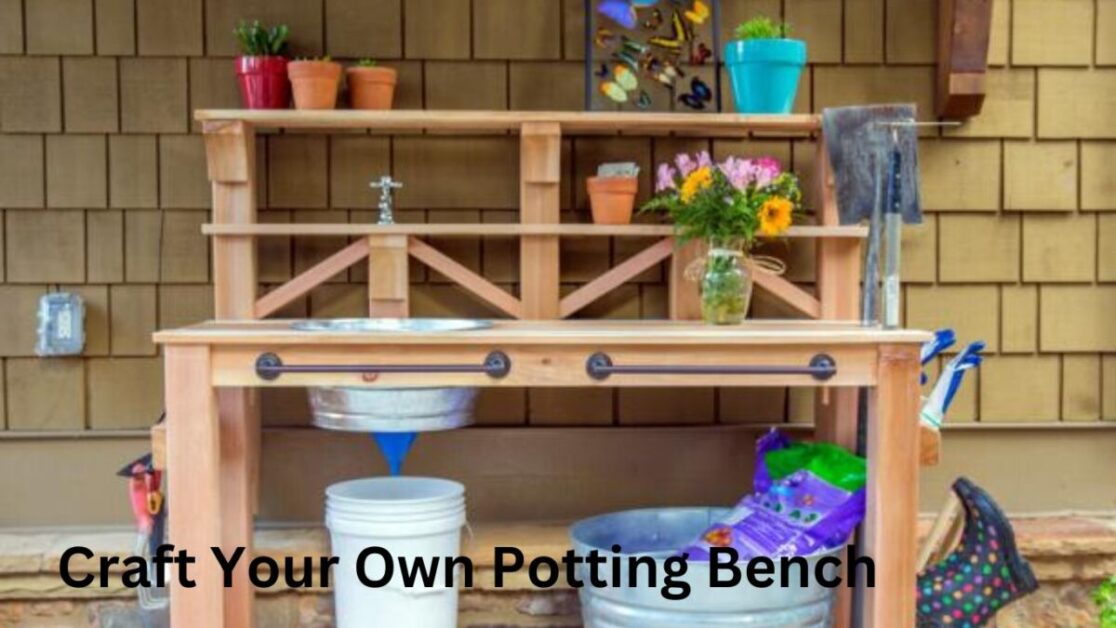
Limited space doesn’t have to limit your gardening capabilities. With a portable or foldable potting bench, you can easily create a functional workspace in even the smallest of areas. These innovative designs are perfect for urban gardeners, balcony enthusiasts, or anyone looking to maximize their gardening potential.
A portable or foldable potting bench offers the convenience of being able to set up and dismantle your workspace as needed. With its compact and lightweight design, it can be easily moved and stored when not in use. This means you can utilize any available space, whether it’s a small corner of your patio, a balcony, or even a cramped garage. The versatility of these benches allows you to adapt to your surroundings and make the most of your limited space.
Despite their compact size, portable and foldable potting benches still provide ample workspace for your gardening needs. Equipped with shelves, hooks, and drawers, you can store your tools, pots, and other materials conveniently within reach. Some designs even offer additional features like adjustable height or wheels for added mobility. With careful planning and organization, you can create an efficient and functional work area that suits your gardening style. So, even with limited space, you can still enjoy the pleasures and rewards of working with plants and soil.
Enhancing the Durability and Weather Resistance of Your Potting on Bench
When building a potting bench, it is important to enhance its durability and weather resistance to ensure its longevity. One way to achieve this is by choosing the right materials for construction. Opting for rot-resistant woods such as cedar or redwood can significantly increase the bench’s ability to withstand the elements. These woods naturally contain oils that act as a barrier against moisture and decay, making them ideal for outdoor use.
Additionally, treating the wood with a water repellent sealant can further enhance its durability. This sealant not only protects the wood from water damage but also prevents it from warping or cracking due to temperature fluctuations. It is important to select a sealant that is specifically formulated for outdoor use and suitable for the type of wood being used.
Another aspect to consider when enhancing the weather resistance of your potting bench is its construction. Reinforcing the joints and adding bracing can add extra stability, ensuring the bench can withstand strong winds or heavy loads. It is also recommended to elevate the bench slightly off the ground to prevent moisture from seeping into the wood.
By taking these measures to enhance the durability and weather resistance of your potting bench, you can create a sturdy and long-lasting workspace that will withstand the test of time.
Incorporating Greenhouse Features into Your Potting on a Bench Design
When designing your potting bench, incorporating greenhouse features can greatly enhance its functionality and versatility. By integrating elements commonly found in greenhouses, you can create an ideal space for starting seeds, nurturing young plants, and providing optimal growth conditions for a variety of flora.
One key feature to consider is a transparent top or roof for your potting bench. This can be achieved by using materials such as glass or polycarbonate panels, which allow ample sunlight to reach your plants while protecting them from harsh weather conditions. This added coverage creates a mini-greenhouse effect, providing a controlled environment that promotes healthy growth.
Another greenhouse feature to incorporate into your potting bench design is adjustable shelving system. This allows you to customize the height and spacing of the shelves according to the specific needs of your plants. By providing ample space for plants of different sizes, you can easily accommodate a variety of seedlings, herbs, and potted plants, maximizing your gardening potential.
By combining the functionality of a potting bench with the growth-enhancing features of a greenhouse, you can create a versatile and efficient gardening space. Whether you’re a hobbyist or a seasoned gardener, incorporating greenhouse elements into your potting bench design will help you create optimal conditions for your plants to thrive. Now let’s explore some creative ideas for repurposing materials in your potting bench construction.
Creating a Stylish and Aesthetically Pleasing Potting Bench
When it comes to creating a stylish and aesthetically pleasing potting bench, there are several key factors to consider. First and foremost, selecting the right materials is essential. Opt for durable, weather-resistant materials such as cedar or pressure-treated wood that can withstand the elements and provide longevity to your potting bench. Additionally, consider incorporating elements of design, such as decorative trim or unique hardware, to enhance the overall look and feel of your bench.
Another crucial aspect to consider when aiming for a stylish and visually appealing potting bench is the color palette. Choose colors that complement your outdoor space or that resonate with your personal style. Earthy tones such as greens, browns, and grays often work well with a natural garden setting, while vibrant colors can add a touch of personality and flair. Remember, the goal is to create a potting bench that not only functions well but also adds visual interest and beauty to your gardening area.
How to Maintain and Care for Your Potting Bench
Maintaining and caring for your potting bench is essential to ensure its longevity and continued functionality. By following some simple steps, you can keep your potting bench in great condition for years to come.
Firstly, it’s important to regularly clean your potting bench to prevent any build-up of dirt, debris, or plant residues. Use a mild detergent or a solution of vinegar and water to wipe down the surfaces. This will not only keep your potting bench looking neat but also help maintain a hygienic workspace.
Additionally, it is crucial to regularly inspect your potting bench for any signs of wear and tear or damage. Check the sturdiness of the joints, screws, and fasteners, and tighten them if necessary. Replace any damaged parts promptly to prevent further deterioration and ensure the stability of your potting bench.
Proper storage is also an important aspect of maintaining your potting bench. During harsh weather conditions or when not in use, consider covering your potting bench with a waterproof cover or moving it to a sheltered area. This will protect it from the elements and extend its lifespan.
Remember, investing a little time and effort in maintaining and caring for your potting bench will pay off in the long run. By following these simple steps, you can continue to enjoy a functional and well-kept workspace for all your gardening endeavors.
Potting Bench Safety Precautions and Guidelines
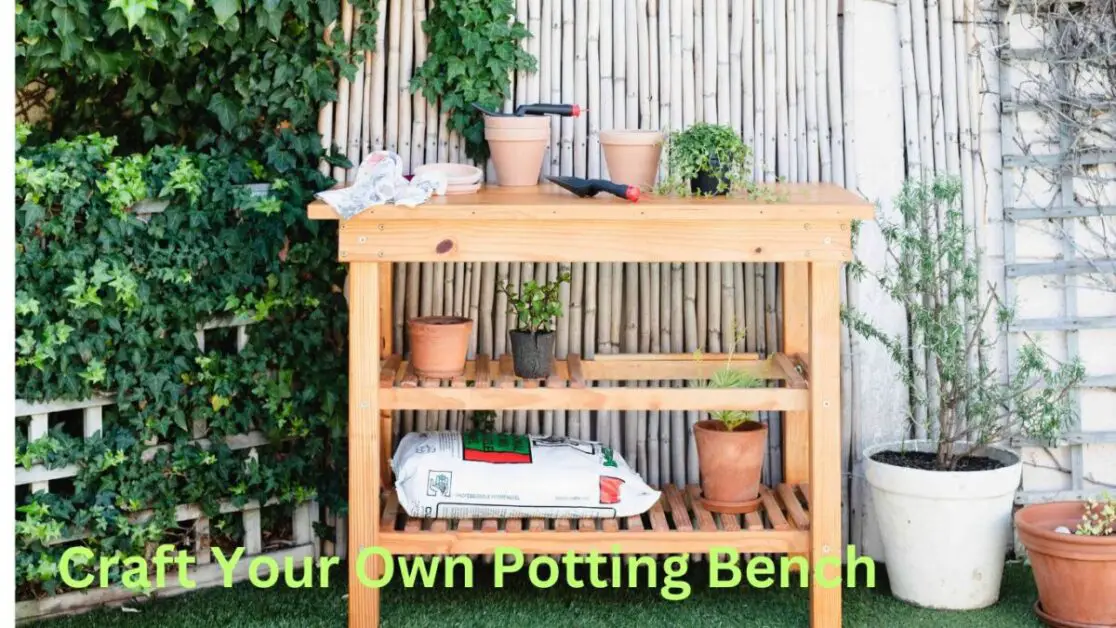
Potting Bench Safety Precautions and Guidelines
When working with a potting bench, it is crucial to prioritize safety to prevent accidents and injuries. Here are some important precautions and guidelines to follow:
1. Wear protective gear: Always wear appropriate protective gear, such as gloves, safety glasses, and closed-toe shoes, when using a potting bench. This will help protect you from potential injuries caused by sharp tools, flying debris, and harmful chemicals.
2. Organize your workspace: Keep your potting bench organized and clutter-free to avoid tripping hazards and unnecessary accidents. Arrange tools and materials in a logical manner, ensuring easy access and visibility.
3. Use proper lifting techniques: When moving heavy pots or bags of soil, use proper lifting techniques to prevent strains or muscle injuries. Bend your knees, tighten your core, and lift using your leg muscles rather than your back.
4. Be cautious with sharp tools: Sharpened tools, like pruning shears or hand trowels, can easily cause cuts and punctures. Handle them with care, always keeping blades covered and away from your body when not in use.
5. Stay hydrated and take breaks: Gardening can be physically demanding, so it’s essential to stay hydrated and take regular breaks. Avoid overexertion and listen to your body’s signals to prevent fatigue and heat-related ailments.
6. Keep children and pets away: Ensure that children and pets are kept at a safe distance from the potting bench. This will prevent accidents and potential exposure to hazardous materials.
By following these safety precautions and guidelines, you can enjoy your gardening activities while minimizing the risk of injuries and accidents. Remember, safety should always be the top priority when working with a potting bench.
Sure, here are two tables outlining materials and tools needed to craft your own potting bench, along with the steps involved:
Materials and Tools
| Materials | Tools |
|---|---|
| Wood (2x4s, plywood) | Saw (circular or table) |
| Screws or nails | Drill and bits |
| Wood glue | Screwdriver |
| L-brackets | Measuring tape |
| Hinges | Pencil |
| Wood stain or paint | Square |
| Workbench surface (optional) | Sandpaper |
Steps to Build a Potting Bench
- Design and Planning:
- Decide on the dimensions and design of your potting bench.
- Sketch out a plan or find a suitable blueprint online.
- Cut Wood to Size:
- Measure and cut the 2x4s and plywood according to your design.
- Use a saw to make straight and accurate cuts.
- Assemble Frame:
- Build the frame using the cut 2x4s, securing them together with screws or nails.
- Use wood glue for added strength.
- Attach Workbench Surface:
- Attach the plywood or other material for the workbench surface on top of the frame.
- Secure it with screws or nails.
- Add Shelves and Dividers (Optional):
- Install additional shelves or dividers for storage and organization.
- Use L-brackets to attach them securely to the frame.
- Install Back Panel (Optional):
- If desired, add a plywood back panel for stability and to prevent items from falling off the back.
- Attach it to the frame with screws.
- Attach Hinges and Doors (Optional):
- Install hinges and doors if you want to include cabinets or storage compartments.
- Secure them to the frame with screws.
- Sand and Finish:
- Sand down any rough edges or surfaces to create a smooth finish.
- Apply wood stain or paint according to your preference.
- Final Touches:
- Add hooks, pegs, or other accessories for hanging tools and accessories.
- Ensure all screws are tightened and the bench is sturdy.
- Placement and Use:
- Place your potting bench in a suitable location in your garden or outdoor space.
- Organize your gardening tools and supplies for easy access and use.
Building your own potting bench allows you to customize it to your specific needs and space requirements while providing a dedicated area for gardening tasks.
Inspiring Examples of DIY Potting Benches for Design Inspiration
When it comes to designing your own DIY potting bench, the possibilities are endless. With a little creativity and imagination, you can create a functional and stylish workspace that not only meets your gardening needs but also adds a touch of charm to your outdoor space. To inspire your design journey, here are a few examples of DIY potting benches that are sure to ignite your imagination.
One captivating design idea is a rustic-inspired potting bench made from reclaimed wood. This eco-friendly option not only adds a touch of nostalgia to your garden but also showcases your commitment to sustainability. Another fascinating design is a modern and sleek potting bench constructed from galvanized steel and concrete. This contemporary look adds a touch of sophistication to any garden and is perfect for those who prefer a more industrial aesthetic. Lastly, a charming vintage-inspired potting bench made from repurposed furniture captures the essence of yesteryear and brings a sense of nostalgia to your gardening routine.
Whether you prefer a rustic, modern, or vintage style, these inspiring examples demonstrate the boundless possibilities for creating your own unique potting bench. So go ahead, let your imagination run wild, and create a design that reflects your personality and enhances your gardening experience.
What are the benefits of building a DIY potting bench?
Building a DIY potting bench allows you to customize it to your specific needs and preferences. It provides a dedicated space for gardening tasks, such as potting plants and storing gardening tools, making it more organized and efficient.
What are the essential tools and materials needed for building a potting bench?
The essential tools for building a potting bench include a saw, drill, measuring tape, screwdriver, and sandpaper. Materials such as wood, screws, nails, and hinges will also be needed.
How do I choose the right design and style for my potting bench?
When choosing a design and style for your potting bench, consider factors such as the available space, your gardening needs, and your personal aesthetic preferences. Look for designs that provide ample workspace, storage solutions, and a design that complements your outdoor space.
Are there step-by-step instructions available for building a basic potting bench?
Yes, step-by-step instructions for building a basic potting bench can be found in the article. Following these instructions will guide you through the construction process and help you create a functional potting bench.
How can I customize my potting bench?
Some tips and tricks for customizing your potting bench include adding hooks or shelves for additional storage, incorporating a sink or water source for easy watering, and using repurposed materials to add a unique touch to your design.
How can I incorporate storage solutions into my potting bench design?
You can incorporate storage solutions into your potting bench design by adding shelves, drawers, or hooks for hanging tools. This will help keep your gardening supplies organized and within reach.
How can I create a functional workspace on my potting bench?
To create a functional workspace on your potting bench, ensure that it has enough surface area for potting plants and enough storage space for your tools and supplies. Consider adding compartments or containers to keep small items organized.
Can I add a sink or water source to my potting bench?
Yes, you can add a sink or water source to your potting bench. This can make watering plants and cleaning up easier and more convenient.
How can I repurpose materials in my potting bench construction?
You can repurpose materials such as old furniture, pallets, or salvaged wood to add character and uniqueness to your potting bench. This not only helps reduce waste but also adds a creative touch to your project.
Is it possible to build a portable or foldable potting bench for limited spaces?
Yes, it is possible to build a portable or foldable potting bench for limited spaces. This allows you to easily move or store the bench when not in use, maximizing the available space.
How can I enhance the durability and weather resistance of my potting bench?
To enhance the durability and weather resistance of your potting bench, consider using materials such as pressure-treated wood or cedar, which are naturally resistant to rot and decay. Applying a weatherproof sealant or paint can also help protect the bench from the elements.
Can I incorporate greenhouse features into my potting bench design?
Yes, you can incorporate greenhouse features into your potting bench design, such as adding a transparent cover or installing shelves for seedlings. This allows you to create a mini greenhouse within your potting bench.
How can I maintain and care for my potting bench?
To maintain and care for your potting bench, regularly clean and remove any dirt or debris. Apply a protective sealant or paint as needed to prevent damage from weather conditions. Keep tools and supplies properly organized to avoid clutter.
What safety precautions should I take when using a potting bench?
Some safety precautions to take when using a potting bench include wearing protective gloves and eyewear, using tools properly and safely, and ensuring the stability of the bench before use. Additionally, keep potentially hazardous materials, such as chemicals and sharp tools, out of reach of children.
Can I find design inspiration for DIY potting benches?
Yes, the article provides inspiring examples of DIY potting benches for design inspiration. These examples showcase different styles, materials, and features that can help you create a unique and functional potting bench.



